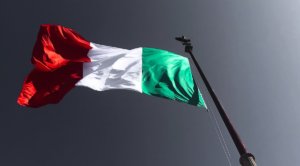FX Cartel demands that US govt provides details about coordinated trades by Dec 1st
According to the former traders, there is no reason, other than gamesmanship, for the government to withhold the requested information about allegedly coordinated trades from the defense for months.

As FinanceFeeds has earlier reported, the US government and former FX traders – Richard Usher, Rohan Ramchandani, and Christopher Ashton, known also as the FX “Cartel” or “Mafia”, have locked horns over evidence to be used in a Forex manipulation case.
Usher, former Head of G11 FX Trading-UK at an affiliate of Royal Bank of Scotland plc, as well as former Managing Director at an affiliate of JPMorgan Chase & Co., Ramchandani, former Managing Director and head of G10 FX spot trading at an affiliate of Citicorp, and Ashton, former Head of Spot FX at an affiliate of Barclays PLC, are alleged to have conspired to manipulate the FX market by “coordinating their bidding, offering, and trading” at “certain times.”
The parties in the case conferred on Wednesday, September 6, 2017, where it was specified that “the conduct that we are talking about, the agreement, is to essentially move the price of the Euro dollar currency pair on occasions when they can make money or avoid losses in doing so and coordinating their trading.”
The conference held on September 6, 2017, aimed to settle a dispute between the parties over the so-called “bill of particulars”, a list of written questions from one party to another asking for details (particulars) about a claim or defense. The US government had earlier refused to provide the defendants with such a “bill of particulars”, saying that instead it would offer an early trial exhibit list, which will specify the particular instances of alleged collusive trading and means of communication. The government has said it was ready to provide this 60 to 90 days prior to trial.
The former traders have argued that the timing is unacceptable, as it would not allow them to properly study all data related to the case and prepare their defense accordingly. Moreover, the parties disagree on the nature of evidence to be included in the document to be delivered by the government.
The government had initially offered to provide a list of episodes, identified by time-stamps in chats, in which the alleged trading coordination occurred, but had refused to provide the corresponding trades. At Wednesday’s conference, the government finally agreed to provide information of certain corresponding trades, but only for a limited subset of the episodes it will use at trial.
The defendants argue that they need the trades underlying each alleged episode to defend against the allegations of coordinated trading.
The government counters that their identification of time stamps in chats should enable the defendants to locate the corresponding trades, but the former traders argue that the chats and audio calls, by themselves, are too vague.
Another point of confusion for the defendants is that the government claimed on Wednesday that it might even introduce at trial allegedly coordinated trades for which the defendants did not even communicate in their coordination,
“and there may be trading that all of these defendants have done that that they don’t speak to one another about but is supporting their collusion and is adding to the efforts of their collusion”.
Adding to the disagreement, the government said on Wednesday that it had not and could not identify all of the trades relevant to its allegations.
“We can’t give the defendants what we don’t have and will never have which is a list of illegal trades or a list of inclusive trades, it just doesn’t exist in a Sherman Act case.”
This position, the defendants note, directly contradicts earlier statements by the government when announcing that several banks had agreed to plead guilty to violating the Sherman Act for FX manipulation.
The defendants’ proposal would require the government to provide a final list of episodes and the accompanying trading data by December 1, 2017, which is approximately six months before the trial is set to start on June 5, 2018. This time request is explained via the complexity of the trading data and the vagueness of the indictment.
In particular, the defendants require:
- a list of the 198 episodes of allegedly coordinated trading by September 18, 2017;
- rolling and winnowed down lists each month, with a final list of episodes (of up to 75) by December 1, 2017;
- for every such episode identified by the government, the corresponding bids, offers, and trades that were allegedly coordinated.
In their letter to the judge assigned to the case, the defendants note that there is no reason, other than gamesmanship, for the government to withhold the information from the defense for months, by which time the defendants would have lost the opportunity to meaningfully test and analyze it with the assistance of experts.
The case, captioned USA v. Usher et al (1:17-cr-00019), continues at the New York Southern District Court.









